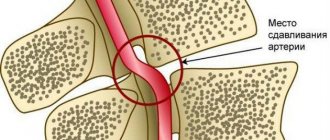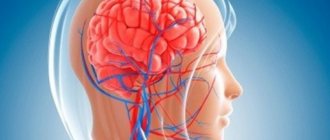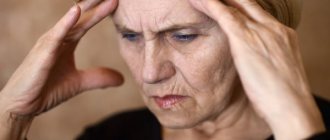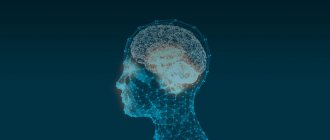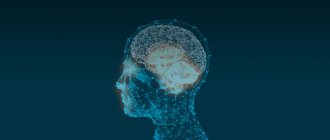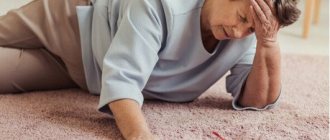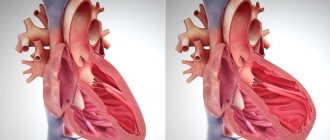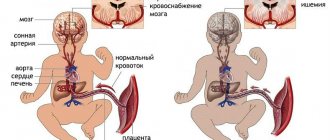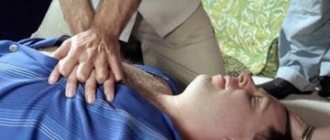ACVA (acute cerebrovascular accident) is a concept that combines a transient ischemic attack and a pre-stroke condition. ACVA is characterized by sudden development and is very dangerous for human health and life, therefore, when its first signs appear, urgent medical attention is necessary. Timely adequate treatment can reduce the severity of the consequences of an attack. To receive qualified assistance for acute stroke, you can contact the Yusupov Hospital, which operates around the clock and provides the necessary assistance in this situation.
What is ONMK?
The diagnosis of stroke (and the resulting stroke) is established in the event of disturbances in the functioning of the cerebral vessels. When blood circulation is disrupted in a certain area of the brain, part of the nervous tissue dies. This can lead to serious disability or death. A stroke is not yet a stroke, but a condition that can lead to it. The development of stroke indicates that a person urgently needs the help of a qualified neurologist, since a full-fledged stroke or cerebral infarction may soon occur, when the consequences will be much more severe. Decoding the diagnosis of stroke will depend on the type of disorder in the vessels: hemorrhage, blockage or narrowing of the vessel, etc. The name of the disease of acute stroke is deciphered by the attending physician based on symptoms and examination data.
It is important to know about the diagnosis of stroke, that this is the most dangerous condition. According to WHO, approximately 12 million people worldwide die from strokes every year. The disease affects both poor and rich, men and women. People with obesity, diabetes mellitus, alcohol abusers, and smokers are most susceptible to this condition. In women, the risk of stroke increases after menopause. Recently, cases of stroke and subsequent strokes have begun to occur in young people (25-40 years old), which is associated with an unhealthy lifestyle and constant stress.
Classification and code according to ICD 10
ACVA code according to ICD 10 is included in the class of cerebrovascular diseases (I60-I69). The consequences of acute stroke according to ICD 10 codes refer to various hemorrhages, heart attacks, strokes, blockages and stenosis of arteries, as well as other lesions of cerebral vessels. The consequences of acute stroke in ICD 10 can be classified as follows:
- subarachnoid hemorrhage;
- intracerebral hemorrhage;
- non-traumatic hemorrhages;
- cerebral infarction;
- unspecified stroke;
- blockage and stenosis of the precerebral and cerebral arteries.
Also, stroke code according to ICD 10 in adults is divided according to the nature of vascular damage:
- ischemic type;
- hemorrhagic type.
ACVA of ischemic type
Acute ischemic cerebrovascular accident is a brain lesion resulting from the formation of an obstruction in a vessel. Most often, this obstacle is a blood clot or cholesterol plaque. An obstruction interferes with the flow of blood to any part of the brain, resulting in oxygen starvation. Nerve tissue needs a constant, continuous supply of nutrients, since the metabolism in nerve cells is very intense. When the access to oxygen and nutrients transported by the blood is stopped, the functioning of the nerve cells is disrupted, and after a short period of time they begin to die. In the case of an ischemic type of circulatory disorder, a certain obstacle interferes with the normal flow of blood, provoking a cerebral infarction. This type of violation is quite common and accounts for up to 80% of cases. ICD 10 codes for stroke of ischemic type include:
- I63 cerebral infarction;
- I65 obstruction and stenosis of the precerebral arteries;
- I66 blockage and stenosis of the cerebral arteries.
stroke of hemorrhagic type
Stroke of the hemorrhagic type is classified as a pathological condition caused by a violation of the integrity of the vessel, resulting in hemorrhage. Depending on the location of the disorder and its extent, the result of hemorrhage is a hematoma in the brain tissue or penetration of blood into the space surrounding the brain. ACVA of the hemorrhagic type in ICD 10 includes:
- I60 subarachnoid hemorrhage;
- I61 intracerebral hemorrhage;
- I62 other non-traumatic hemorrhage;
The condition after an acute stroke, related to any code according to ICD 10, is severe and requires urgent intervention from a specialist. The consequence of stroke is the death of nerve cells, which occurs very quickly. The consequences of acute cerebrovascular accident can be stopped if the person receives help within 4-5 hours after the attack.
Causes and symptoms of cerebrovascular accident
To assess the degree of brain damage, the Rankin scale is often used for stroke and subsequent stroke. Cerebrovascular diseases (CVD) and stroke can significantly reduce a person’s performance and lead to disability. Therefore, conditions such as acute coronary syndrome (ACS) and stroke, associated with disruption of blood vessels in vital organs (heart and brain), require urgent treatment to the hospital.
The Rankin scale presents six degrees of disability after stroke and stroke:
0. There are no clinical symptoms; 1. The vital systems are not significantly impaired, there are minor symptoms, but the person can perform all daily activities; 2. Mild disturbances in vital activity systems: the performance of some actions is limited or inaccessible, a person can take care of himself without outside help; 3. Moderate disability: some assistance is required, the person can walk independently; 4. Severe disabilities: a person is unable to walk independently, requires care and assistance in everyday life; 5. Severe disabilities: complete immobility, urinary and fecal incontinence, the person requires constant assistance from specialized medical personnel.
Each grade of the Rankine scale has its own symptoms, which make it possible to determine clinically how affected the brain is. With minor lesions of the 1st degree, a person has no signs of disability, he is able to care for himself and perform daily work. However, slight muscle weakness, speech disorders, and loss of sensitivity may occur. These disorders are mild and do not lead to restrictions on daily life.
In grade 2, mild signs of activity impairment are observed: the person is unable to perform previous work involving complex manipulations or fine motor skills. However, he can take care of himself independently, without the help of others.
At grade 3, moderate signs of brain dysfunction are observed:
- the person needs some outside help in performing hygiene procedures;
- he cannot prepare food or dress himself;
- speech impairments are pronounced (difficulties arise in communication, expressing one’s thoughts);
- It is possible to use a cane or other walking aids.
Symptoms of acute cerebrovascular accident of the 4th degree are clearly expressed, there are clear signs of disability. A person cannot walk independently, take care of himself, he needs round-the-clock assistance.
With the 5th degree of disability, a person is bedridden, he cannot speak, cannot eat independently, and does not control bowel movements. A person needs constant help and supervision.
One of the most clinically striking and health-threatening strokes is damage to the VBB (vertebrobasilar region). In this case, the pathological process affects parts of the brainstem, thalamus, cerebellum and occipital lobes of the brain. ACVA in the vertebrobasilar region manifests itself as follows:
- partial facial paralysis;
- impaired motor activity of the hands;
- difficulty moving the leg and arm on one side of the body;
- impaired coordination of movements;
- the appearance of muscle weakness in the lower extremities;
- mild arm paresis;
- swallowing disorder;
- nausea, vomiting;
- hearing and speech impairment;
- headache and dizziness.
When developing stroke, it is important to consult a doctor as soon as possible. To do this, you need to pay attention to the first symptoms of pathology:
- severe acute sudden headache;
- sudden loss of consciousness;
- sudden muscle weakness;
- sudden disturbance of speech and its understanding;
- sudden visual impairment;
- sudden numbness of the limbs or areas of the face;
- impaired coordination of movements;
- nausea, vomiting.
The severity of symptoms will depend on how severely the brain is damaged. ACVA occurs spontaneously and cannot be predicted. But you can try to exclude factors that increase the risk of developing strokes and strokes:
- smoking;
- alcohol abuse;
- unhealthy diet;
- lack of physical activity;
- chronic fatigue and stress.
People with diabetes, arrhythmia, and overweight need to be especially responsible about their health. These conditions quite often become the causes of the development of circulatory disorders in the brain.
What is the reversibility of the pathology?
For timely diagnosis, it is important to establish a period of symptom reversibility. Morphologically, this means preserved neuronal functions. Brain cells are in a phase of functional paralysis (parabiosis), but retain their integrity and usefulness.
The ischemic zone is much larger than the necrosis area; the neurons in it are still alive
In the irreversible stage, it is possible to identify a zone of necrosis in which cells are dead and cannot be restored. Around it there is an ischemic zone. Treatment is aimed at supporting adequate nutrition of neurons in this area and at least partially restoring function.
Modern research has shown extensive connections between brain cells. A person does not use all reserves and opportunities in his life. Some cells are able to replace dead ones and provide their functions. This process is slow, so doctors believe that rehabilitation of a patient after an ischemic stroke should continue for at least three years.
Diagnosis of the disease
When the first signs of cerebrovascular accident appear, you must call an ambulance or go to the hospital yourself (if your condition allows). The doctor will perform an examination and collect anamnesis (description of the patient’s condition and related data). The doctor must be provided with the following information:
- main complaints (headache, disturbance in the functioning of the sensory organs, nausea, etc.);
- when the condition worsened;
- under what conditions;
- the presence of risk factors for stroke (smoking, alcoholism, chronic diseases, taking medications).
A simple test can detect the development of stroke or stroke (provided that the patient is conscious):
- It is necessary to ask the patient to smile (with stroke, the smile will be skewed);
- It is necessary to ask the patient to stretch his arms forward and then raise them up (with a stroke he will not be able to do this or will only raise one arm);
- Ask the patient to repeat any simple sentence (with stroke, this will cause difficulties);
- Ask the patient to stick out his tongue (with stroke, the tongue will be clearly displaced from the center).
The doctor assesses the general and local status of stroke. General status represents the general condition of the patient, clinical manifestations of cerebrovascular accident. Local status is described in the presence of head trauma. The collected data gives the doctor an idea of the patient’s condition, on the basis of which he prescribes examinations to obtain a complete picture of what is happening.
Diagnosis of stroke is carried out using visualization of nerve tissue using CT and MRI. These are the most informative diagnostic methods that allow you to identify the lesion. To provide timely assistance in case of acute stroke, the examination is carried out urgently. In some cases, the patient will need emergency surgery.
At the Yusupov Hospital you can undergo examinations of any complexity for acute stroke and stroke. The hospital is equipped with the latest technology, which allows for a quick and high-quality examination of the patient. High-precision technology will help establish an accurate diagnosis and the extent of brain damage.
Examination algorithm
The examination algorithm for suspected acute stroke proceeds according to the following plan:
- examination by a specialist in the first 30-60 minutes after the patient’s admission to the hospital, examination of the neurological status, clarification of the medical history;
- taking blood and studying its coagulability, glucose, electrolytes, enzymes for myocardial infarction, and the level of hypoxia;
- if it is not possible to conduct MRI and CT, do an ultrasound of the brain;
- spinal puncture to exclude hemorrhage.
Treatment
Treatment of stroke will include first emergency care and subsequent therapy. Further therapy consists of a number of measures to normalize and support brain function. The doctor informs the patient about how to take nootropics for stroke and other medications, nutritional habits of patients with stroke, clinical recommendations for stroke. Treatment of acute cerebrovascular accidents includes basic and specific therapy. Basic therapy contains the following measures:
- Restoring and maintaining respiratory function.
- Maintaining optimal blood pressure and cardiovascular activity. The patient is given intravenous medications (labetalol, nicardipine, sodium nitroprusside) according to indications; anaprilin, enaprilin, captopril, esmolol are used to correct blood pressure. Antihypertensive therapy depends on the type of stroke - hemorrhagic or ischemic.
- Treatment of cerebral edema.
- Fighting seizures, intracranial hypertension, various neurological complications.
Specific therapy includes:
- Carrying out intravenous or intra-arterial thrombolysis depending on the time of onset of the first symptoms of the disease. Aspirin is prescribed, and anticoagulants are prescribed according to indications.
- Maintaining optimal blood pressure.
- In certain cases, surgery is performed to remove the brain hematoma, and the hemicraniectomy method is used to decompress the brain.
Treatment of stroke is carried out in a hospital setting. The faster the patient receives medical assistance, the higher the chance of recovery.
Procedure for providing medical care
The scope of medical care for stroke or stroke will depend on the severity of the patient’s condition. It is important to get to the hospital as soon as possible. If the cause of the stroke is a blood clot, then it is necessary to take an antithrombotic drug within 3 hours after the onset of cerebrovascular accident to reduce the consequences.
Treatment of stroke occurs in a hospital, its duration is from two weeks (for mild damage). The patient is prescribed infusion therapy, medications to stabilize blood pressure, and medications to normalize the functioning of nerve cells. In the future, the patient will need a rehabilitation course to restore lost skills or adapt to new living conditions. Rehabilitation is a very important part of treatment. It is rehabilitation measures, when performed regularly, that contribute to the restoration of working capacity.
At the Yusupov Hospital you can undergo a full course of treatment for acute stroke and stroke, including emergency care and rehabilitation. The hospital employs the best neurologists, cardiologists, surgeons in Moscow, doctors of science, and doctors of the highest category who have extensive experience in successfully treating these conditions. The hospital is equipped with everything necessary for a speedy and high-quality recovery of patients.
Artificial ventilation for acute stroke
When a patient is admitted with stroke or stroke, the doctor assesses the adequacy of spontaneous breathing and the level of oxygen in the blood. If the patient has a low level of consciousness, there is a risk of aspiration, high rates of intracranial hypertension, he requires artificial ventilation (ALV).
Ventilation is also performed for:
- Violation of central regulation of breathing;
- Obstruction of the tracheobronchial tree;
- Pulmonary embolism.
Treatment with a dropper (infusion therapy)
Infusion therapy begins from the moment a patient is admitted with stroke or stroke. A 0.9% sodium chloride solution is prescribed. With stroke, hypovolemia (decreased blood volume) quite often occurs, which can be eliminated by infusion therapy. Infusion is also necessary to control the water balance in the body. Infusion therapy is canceled gradually, after confirmation of normalization of the level of electrolytes and other elements in a blood test.
Normalization of blood pressure
The first three days are critical after stroke. During this period, repeated violations or the development of a major stroke are possible. Now it is necessary to stabilize the patient's condition and respond to any changes. Some important indicators are intracranial pressure and blood pressure. Pressure level indicators should not exceed the permissible norm or be below the norm. Therefore, pressure monitoring is carried out constantly. To normalize the indicators, special drugs are first administered intravenously, and then switched to tablet form of drugs.
Elimination of convulsive syndrome
With stroke, there is a high risk of seizures. However, there is no prevention for this condition. Anticonvulsants are prescribed immediately when a seizure occurs. The drugs are administered orally or intravenously.
Use of neuroprotectors and nootropics
An important direction in the treatment of stroke and stroke is the restoration of damaged nerve tissue and the protection of healthy tissue from the spread of “vascular catastrophe”. Treatment is performed with the help of neuroreparants and neuroprotectors.
Nutritional Features
If swallowing is impaired, the patient is prescribed feeding through a tube. At the beginning of treatment, food contains the necessary elements to maintain the functioning of the body, combined with infusion therapy. The calorie content of food increases gradually. In the future, the method of eating will depend on the severity of the brain damage. The course of rehabilitation of patients after acute stroke and strokes includes the restoration of self-care skills, so with the proper effort and capabilities of the patient, he can feed himself again. Food should be varied, contain all the necessary microelements and vitamins, that is, comply with the principles of rational nutrition.
Signs of a cerebral stroke
Ischemic stroke means the occurrence of irreversible changes in brain cells. At the clinic, neurologists distinguish periods of the disease:
- acute - continues from the onset of symptoms for 2–5 days;
- acute - lasts up to 21 days;
- early recovery - up to six months after the elimination of acute symptoms;
- late recovery - takes from six months to two years;
- consequences and residual effects - over two years.
Some doctors continue to distinguish small forms of stroke or focal ones. They develop suddenly, the symptoms do not differ from cerebral crises, but last up to three weeks, then completely disappear. The diagnosis is also retrospective. During the examination, no organic abnormalities were found.
Cerebral ischemia, in addition to general symptoms (headaches, nausea, vomiting, dizziness), manifests itself locally. Their nature depends on the artery that is “turned off” from the blood supply, the state of the collaterals, and the dominant hemisphere of the patient’s brain.
Let's consider the zonal signs of blockage of the cerebral and extracranial arteries.
If the internal carotid artery is damaged:
- vision is impaired on the side of the blocked vessel;
- the sensitivity of the skin on the limbs and face on the opposite side of the body changes;
- paralysis or muscle paresis is observed in the same area;
- possible loss of speech function;
- inability to realize one’s illness (if the focus is in the parietal and occipital lobes of the cortex);
- loss of orientation in parts of one’s own body;
- loss of visual fields.
Narrowing of the vertebral artery at the level of the neck causes:
- hearing loss;
- nystagmus of the pupils (twitching when deviating to the side);
- double vision.
If the narrowing occurs at the confluence with the basilar artery, then the clinical symptoms are more severe, since cerebellar damage predominates:
- inability to move;
- impaired gesticulation;
- chanted speech;
- violation of joint movements of the trunk and limbs.
The possibility of developing compensatory collateral circulation is much higher when the patency of extracranial vessels is impaired, since there are connecting arteries for blood flow from the other side of the body.
If there is insufficient blood flow in the basilar artery, manifestations of visual and brain stem disorders (impaired breathing and blood pressure) occur.
If the anterior cerebral artery is damaged:
- hemiparesis of the opposite side of the body (unilateral loss of sensation and movement), often in the leg;
- slowness of movements;
- increased tone of flexor muscles;
- loss of speech;
- inability to stand and walk.
Blockage of the middle cerebral artery is characterized by symptoms depending on the damage to the deep branches (feeding the subcortical nodes) or long ones (approaching the cerebral cortex)
Obstruction of the middle cerebral artery:
- when the main trunk is completely blocked, a deep coma occurs;
- lack of sensitivity and movement in half of the body;
- inability to fix the gaze on an object;
- loss of visual fields;
- loss of speech;
- inability to distinguish the left side from the right.
Obstruction of the posterior cerebral artery causes:
- blindness in one or both eyes;
- double vision;
- gaze paresis;
- seizures;
- large tremor;
- impaired swallowing;
- paralysis on one or both sides;
- respiratory and blood pressure disturbances;
- brain coma
When the optic geniculate artery is blocked, the following appears:
- loss of sensation in the opposite side of the body, face;
- severe pain when touching the skin;
- inability to localize the stimulus;
- perverted perceptions of light, knocking;
- “thalamic hand” syndrome - the shoulder and forearm are bent, the fingers are extended at the terminal phalanges and bent at the base.
Impaired blood circulation in the area of the visual thalamus is caused by:
- sweeping movements;
- large tremor;
- loss of coordination;
- impaired sensitivity in half of the body;
- sweating;
- early bedsores.
The combination of damage to several branches causes complex syndromes of loss of sensitivity and false sensations in the limbs. The ability to diagnose ischemic changes depends primarily on the neurologist’s knowledge of the clinical manifestations of vascular disorders.
Providing emergency assistance
Acute cerebrovascular accident requires emergency care, since it will not be possible to normalize the patient’s condition on his own. The standard for emergency medical care for acute stroke and stroke states that the patient should be taken to the hospital within 3-5 hours after the onset of the attack. In this case, it is possible to stop the spread of the pathological condition and minimize the severity of the consequences. Help for a person with a stroke can only be provided in a hospital. At home you can do the following:
- Call an ambulance;
- Lay the person on a flat surface (floor, bed), placing a pillow, blanket or folded sweater under the head;
- Turn the person on their side if they feel sick;
- Open the windows to let in fresh air;
- Unfasten clothing that impedes blood flow and air flow (belt, collar, scarf, tight buttons);
- While waiting for doctors, collect documents and personal belongings.
In case of an emergency, it is necessary to provide assistance to the patient before the medical team arrives. If you lose consciousness, you should check your breathing and pulse, and place the person in a position that will not interfere with breathing. If there is no breathing or pulse, it is necessary to begin mouth-to-mouth artificial respiration and chest compressions. If convulsions occur, the patient should be protected from injury: remove nearby sharp and blunt hard objects. You should not try to restrain the patient or unclench his teeth. It is better to wait until the attack ends and check the airway.
If stroke develops, you can go to the Yusupov Hospital, whose emergency department is open 24 hours a day, seven days a week. The hospital has an ambulance, so the patient will receive all necessary medical care in a timely manner. In the intensive care unit of the Yusupov Hospital, the patient will be able to provide the required assistance to stabilize his condition.
The procedure for providing medical care to patients with stroke after admission to the hospital emergency department is as follows:
- Medical examination, ECG, blood tests;
- Examination by specialized specialists: neurologist, cardiologist, neurosurgeon, resuscitator;
- Performing a computed tomography scan of the brain;
- Evaluation of survey results;
- Start of therapy.
After the patient is admitted to the hospital and before the start of therapy, no more than an hour should pass. If necessary, the patient is sent to the intensive care unit immediately, after which the necessary examinations are performed.
ONMC: four letters, one diagnosis, a lot of questions
A stroke is an acute cerebrovascular accident (CVA), resulting from blockage of a vessel or rupture of a vessel, manifested by neurological symptoms (paresis, paralysis, speech impairment).
What is happening in the body at this moment:
-The vessel is blocked by a blood clot or plaque
-Vessel rupture occurs
- Death of nerve cells in the brain occurs
-The body loses the functions for which these cells were responsible (paralysis, loss of speech, vision)
About 500 thousand people a year in Russia and more than 6.5 million worldwide suffer from stroke.
Today we spoke with the head of the specialized department of the regional vascular center of the Alexander-Mariinsk Regional Clinical Hospital, where stroke patients are treated every day. Elena Vitalievna Asfandiyarova is a neurologist of the highest qualification category, whose work experience is more than 30 years, including more than 10 years in emergency neurology, since 2013 in the department for patients with stroke.
-Elena Vitalievna, let's start right away with the most important thing. Are there warning signs of a stroke that can appear long before it, and how can a person recognize them?
Precursors of ischemic stroke can be transient ischemic attacks, or transient cerebrovascular accident. This is when a person, due to high blood pressure, experiences numbness or weakness in the limbs of the same name, sometimes with speech impairment. This condition can be observed for several minutes, less often – one hour, after which the symptoms disappear. After such symptoms, the probability of having a stroke in the next month is more than 60%. Therefore, in this situation, the issue of further examination of the patient and the prescription of drugs that prevent the occurrence of stroke is urgent.
Very often, patients do not treat high blood pressure: they take medications only during a crisis, do it irregularly, or do not take them at all. In such a situation, the brain vessels may not be able to withstand another surge in pressure, and a hemorrhagic stroke or cerebral hemorrhage will occur.
-Tell us a little about these types of stroke. What is the difference?
An ischemic stroke occurs when, due to blockage of a vessel by a blood clot or atherosclerotic plaque, blood flow to one or another part of the brain stops and necrosis of brain tissue occurs. About 80% of all strokes are ischemic strokes. At this time, within a few minutes, a stroke core is formed - an area that cannot be saved. Often this zone is not so large. And around the core of the stroke, a penumbra zone is formed - brain cells that have reduced blood flow, but are still viable. This zone, as a rule, is several times larger than the nuclear zone of the stroke; the cells in it live up to 4.5-6 hours. It is for the preservation of this zone that the struggle takes place in the first hours after the onset of a stroke. That is why it is necessary to deliver the patient to a specialized department as soon as possible for possible pathogenetic treatment.
Hemorrhagic stroke is a rupture of a vessel due to pathology of its wall, for example, an aneurysm (thinning and protrusion). This often occurs with a sharp increase in blood pressure. As a result, hemorrhage occurs in the brain, a hematoma is formed, which, due to the closed volume of the skull, puts pressure on the substance of the brain and disrupts the functioning of any of its areas. This pathology accounts for 20% of the total number of strokes. Often, hemorrhagic stroke can be treated with surgery.
-What are the main symptoms of a stroke?
Symptoms of a stroke are general cerebral: headache, nausea, vomiting, impaired consciousness. There is also a disturbance of movement and sensitivity in the limbs of the same name, a distortion of the face and a speech disorder.
In addition, signs of a stroke may include blurred vision, dizziness, and unsteadiness when walking, which occur acutely against a background of high blood pressure.
— What should be the actions of a person who observes such symptoms in himself or someone else?
Even at the slightest suspicion of a stroke, the first thing a person should do is call an ambulance, since only in a specialized department is it possible to make an accurate diagnosis and begin the necessary treatment in a timely manner. All patients with suspected stroke undergo computed tomography. Even if the symptoms of a stroke were relieved within a few minutes or hours, this condition also requires immediate hospitalization and a decision on further tactics with the patient - treatment in a hospital, prevention of stroke, or possibly surgical treatment in the department of vascular surgery (for pathology of the main arteries of the brain).
-How can a person who happens to be nearby help you before the specialists arrive?
If you suspect a person is having a stroke, then first of all you need to provide him with rest. If there are signs of nausea or vomiting, then turn your head to the side so that vomit does not enter the respiratory tract, unfasten everything that is tight: buttons, locks, belt and provide access to fresh air (open windows, doors).
IMPORTANT TO REMEMBER: IF YOU SUSPECTED A STROKE, IT IS STRICTLY PROHIBITED TO TAKE MEDICINES BEFORE THE ARRIVAL OF THE AMBULANCE Crew!!!
“Many people don’t see a doctor because they’re not sure what’s really going on with them. How dangerous are such delays for human life?
It often happens that a person has signs of a stroke, but does not seek help at the hospital. Moreover, this does not depend on the level of awareness in this issue or education - this can even happen to medical workers. Having noticed numbness in the limbs, for example, many people hope for the Russian “maybe” and wait for everything to go away on its own. As a rule, over time, the symptoms increase, the patient’s general condition worsens, and only then does the person seek help from specialists. These lost hours, unfortunately, in many cases lead to disappointing prognoses, and can cost someone their life. If you end up in the hospital on time, then the chances of undergoing treatment that will completely relieve the person from the neurological deficit increase.
Today, in the Astrakhan region there are a sufficient number of specialized hospitals to provide care to patients with stroke at any time of the day.
-I have often seen such headlines as “Stroke is getting younger.” What do you think is the reason for the occurrence of this dangerous disease in young people?
There has always been such a concept that stroke is a disease of middle-aged patients. Unfortunately, it is not. Every year more and more young people are affected by this disease. This is most often associated with an incorrect lifestyle, high workload, and stressful situations. But when children suffer from strokes, the situation is a little different. If in adults the cause lies in the pathology of the heart and blood vessels, then in children it is in increased blood clotting. In our department there were also young people with congenital heart defects. With this pathology, cardiac output to large vessels of the brain is disrupted. There were young people with congenital vascular pathology, which they did not even suspect. The stroke occurred due to sudden movements while playing sports. At this moment, the vessel is dissected (ruptured). A hematoma forms between the walls, it stratifies, forming blood clots, which also “fly” to the head. This variant of ischemic stroke quite often occurs in young people during sports activities. Unfortunately, it is impossible to predict its appearance.
That is, there are no diagnostic tests that could determine increased blood clotting in a young patient or find a damaged vessel?
Probably not possible to predict. If there are any prerequisites for increased blood clotting, then the doctor will prescribe special tests. If young patients have high blood pressure or have any abnormalities in the functioning of the heart, these young people should be observed by doctors and periodically undergo preventive examinations. It is possible to examine the blood for increased coagulability (if there is a need for it), and it is also possible to examine the vessels of the head and neck after a doctor’s prescription.
-Can you remember the youngest patient diagnosed with stroke in your practice?
The youngest patient in my memory was 21 years old at the time of admission to the hospital. He just had congenital features with blood clotting. He was admitted in a timely manner, in the first hours after the onset of an ischemic stroke, with severe paresis of the limbs. The patient had speech disorders for a long time. But, fortunately, the rehabilitation was successful and he fully recovered. Today I have already graduated from college. We continue to communicate with him, and he periodically seeks advice.
-How long can a patient spend in hospital after a stroke, and what treatment does he receive?
If the patient goes to the hospital on time and is diagnosed with a transient cerebrovascular accident, then within 7 days he is given a full range of examinations and preventive measures are prescribed to prevent a stroke.
Patients with moderate ischemic stroke spend about two weeks in the hospital. There are strokes with minimal deficiency, these patients are treated for up to 10 days, secondary prevention of recurrent strokes is prescribed and the patient is sent for outpatient treatment. In the case of a severe stroke, the length of hospital stay increases significantly – up to one month. Next, the issue of rehabilitation is resolved.
What methods have been introduced today for the treatment of stroke? How is he treated in the hospital?
A patient with suspected stroke is admitted to the hospital, bypassing the emergency department to the examination room of the regional vascular center. First of all, he undergoes a computed tomography scan of the brain and is examined by specialists. Once the diagnosis is confirmed, all patients are sent to the intensive care ward, where they remain for at least 24 hours. There, treatment begins from the first minutes and their condition is monitored around the clock. When the condition stabilizes, the patient is transferred to the early rehabilitation ward. If a patient is admitted to the hospital during the so-called “golden hour” - this is up to 4.5 hours from the onset of an ischemic stroke and, in the absence of contraindications, he is given thrombolytic therapy. Thrombolysis is the administration of a special, expensive intravenous drug. This procedure is included in the standards of care for patients with ischemic stroke and is carried out within the framework of compulsory medical insurance. When using this treatment method, we see the result already “on the needle.” A real miracle occurs: the patient’s face straightens out, his limbs begin to work, and his speech returns. This is the most effective method of treating ischemic stroke today, which is used throughout the world. We have been using thrombolysis in our practice since the opening of the department - more than 6 years. But this method is not suitable for everyone, as it has more than 20 contraindications. And, unfortunately, we cannot use it as often as we would like. This is due to the fact that most patients seek medical help too late.
-If you find yourself in the hands of doctors in time, is it possible for a person to return to his normal life in the future?
Stroke is a serious disease. More than 30% of patients die after a stroke within the first month, 65 survive, of which 10-12% return to normal life, the rest remain disabled. Disability is an equally terrible outcome of this pathology. It is not enough to save the patient; it is necessary to ensure that he returns to social life. After all, there is life after a stroke! Therefore, I repeat, the sooner the patient is admitted to a specialized department, the sooner rehabilitation measures begin - and they begin already in the intensive care ward - the better the result from the treatment received.
-Which specialists treat stroke in the hospital?
Not only a neurologist and a resuscitator care for the patient. A multidisciplinary team is involved in the work. It also includes a cardiologist, a medical psychologist, a doctor and exercise therapy instructor, a physiotherapist, a speech therapist, and nursing and junior medical personnel. All these people work with patients who have suffered a stroke.
I heard that there are cases when, after a severe stroke, the patient’s relatives want to immediately take him home, not seeing the point in rehabilitation. That's the right decision?
In this situation, of course, we cannot hold back. But we try to explain that it is better to remain under the supervision of doctors and visit your loved one in the hospital. In our hospital, classes are held with the relatives of patients, a psychologist communicates with them, and here they explain how to care for the patient. Let me cite one proven fact: if one person in the family suffered a stroke and became bedridden, then about 8 relatives are “excluded” from society (if they are caring relatives, of course). Everyone should be involved with this patient. Therefore, we convince you that it is necessary to stay in the hospital for the first time in order to prepare to independently care for your loved one. In addition, there are cases when we do not see results in the first week, but they appear a little later. The patient requires ongoing rehabilitation after a stroke.
What role do loved ones play in the patient’s recovery process?
Colossal! It has been proven that a patient who has suffered a stroke must be in society. No expensive medicine can replace communication with relatives. Bringing you to the window, talking, showing photos and trying to get a response - this is the minimum that loved ones should do every day. Stroke is a disease that requires the joint efforts of specialists and relatives. In the first days, we often encounter anger from relatives: they blame the doctors for what happened. They can be understood, because this is a huge stress for the family. But, as a rule, this condition passes, the relatives come to understand everything that is happening, and then we begin to work with them as a team. There are two identical strokes with different outcomes. Do you know what the difference is? – No, not in treatment or rehabilitation. It’s just that one patient’s relatives visit him every day and sincerely worry about him, but in another case this is not the case.
-How many stroke patients are treated in your department every month?
I can say that today the department is overcrowded. Apparently, the abnormal weather also affects temperature changes. On average, we discharge more than 100 patients with a positive outcome every month. Unfortunately, we also have negative results when we cannot help save our patient. The mortality rate in our department is low compared to other similar departments in our region and much lower than the national figures. We are proud of this. I believe that this is the merit of our close-knit team, whose work is focused on results. Our attitude towards patients is always warm, we try to support them not only with medications and special classes, but also morally, we know all patients by name, we often know their life stories, we will always find time to talk with the patient on abstract topics. The department has our personal library, where patients are happy to borrow books, read them in the department, and sometimes take them with them. In the intensive care unit, we often play music: sometimes classical, sometimes according to the wishes of our patients; if the patient cannot say about his preferences, then we ask the family what their relative prefers to listen to. We remain friends with many patients even after discharge.
-Elena Vitalievna, how can we still reduce the risk of stroke? Are there effective prevention measures?
Considering that in most cases, stroke is caused by arterial hypertension, the main preventive measure is blood pressure control. It is necessary to regularly use antihypertensive drugs. Precisely regularly, since they tend to accumulate in the body and maintain normal blood pressure. It is also necessary to control cholesterol levels, treat diabetes and chronic diseases, lead a healthy lifestyle, and devote enough time to physical activity and physical education. You need to walk a lot, not run, but walk. There is an expression: “Running from a heart attack leads to a stroke.” This implies that the body requires reasonable physical activity. Everything is good in moderation!
As for diet, it is important to limit the consumption of animal fats and give preference to fish, vegetables and fruits. And, of course, a positive attitude, less anxiety and stress. Live for today, please your loved ones and enjoy life yourself. Find happiness in the little things, be outdoors more often, do what you love, and don’t forget to look after your health!!!
Consequences
The consequences of stroke and stroke can be very severe, even death. Residual effects of stroke may be present throughout life, even after the end of the main therapy. Therefore, it is very important to undergo a rehabilitation course and, if necessary, repeat it over time. A person after a stroke needs willpower, as well as the support of loved ones to restore lost functions. Regular implementation of rehabilitation measures allows you to achieve good results in eliminating the consequences of stroke. Professionals at the Yusupov Hospital, using specialized techniques, will help you get the best effect in this difficult work.
The consequences of stroke will depend on the area of brain damage and the extent of the disorders. The degree of their severity can vary greatly: from imperceptible changes in behavior to complete paralysis. The consequences of stroke and stroke include:
- Complete or partial paralysis;
- Speech impairment;
- Impaired coordination of movements;
- Visual and hearing impairment;
- Impaired perception of space and time.
It is difficult for a person to move around, do the same job, or take care of himself. In severe cases, a person remains bedridden after a stroke. After a moderate stroke, the patient's speech is impaired; he cannot speak clearly or control the timbre and volume of his voice. Communication usually occurs through gestures and facial expressions. Memory impairment and the development of dementia are often noted. Another serious consequence of a stroke is depression. This condition should be taken seriously as a positive mental attitude is important for a person's continued recovery.
After a stroke, it is very important to undergo rehabilitation. With its help, you can recover after a stroke, albeit not completely, but significantly. The brain also needs training, like the rest of our body. A damaged brain requires special training under the supervision of professionals. The sooner rehabilitation measures are started, the greater the chances of maximum recovery after a stroke.
Movement restoration
This is the first important task of rehabilitation.
Loss of coordination and loss of mobility occurs in 80-90%, of which only 30% of patients remain able to move independently immediately after an attack. In this area, research is continuously being conducted and methods with a high level of efficiency are being developed. Today, three of them are most often used:
- A method for learning a specific skill. A rehabilitation specialist helps the patient set a specific task and solve it. As a result, the patient develops and learns the most productive movement strategy.
- Forced movement therapy. In this case, the limb that was not damaged at the time of the stroke is deliberately immobilized. As a result, the entire load falls on the injured leg/arm. Daily household activity helps restore the functionality of the organ.
- Bilateral training. In this case, motor tasks are performed simultaneously by both the healthy and the injured limb.
Rehabilitation after stroke
In rehabilitation after stroke, the Yusupov Hospital uses an integrated approach to ensure the best recovery for patients. Physiotherapists, speech therapists, massage therapists, exercise therapy instructors, and occupational therapists work with the patient. Physiotherapy and exercise therapy can help restore motor functions. The massage therapist eliminates muscle spasms and normalizes their tone. The speech therapist's task is to restore speech and swallowing. An ergotherapist helps to adapt to new living conditions and teaches everyday skills.
The human brain has a unique property - neuroplasticity - the ability to regenerate. New connections between neurons are formed in the brain, due to which lost functions are restored. Neuroplasticity can be stimulated, which is what happens during the rehabilitation process. Regular exercises, which are selected individually depending on what function is to be restored, must be performed constantly, every day until the desired effect is obtained. Regularity is a key factor in achieving your goal; without it, it is impossible to achieve any results.
During the rehabilitation process, various elements of breathing exercises and intellectual exercises are used. All this helps the brain work better and better. Also in rehabilitation, various simulators can be used to help learn how to walk again or perform any action (for example, alternately bending and straightening fingers), provoking its implementation.
An important part of rehabilitation is moral and psychological support. The development of post-stroke depression significantly worsens the patient's condition. This condition can be caused by social isolation, lack of desired results in treatment, and certain medications.
Speech restoration
This is the second important task of rehabilitation.
There are several rehabilitation programs. The choice is influenced by the period and stage of rehabilitation, the nature and degree of speech dysfunction. The main difference between the early stage and the late stage is the degree of patient participation: from passive to active.
What does the doctor do:
- Stimulates listening comprehension.
- Works with the expressive side of speech through the use of proverbs, songs, elementary speech patterns, and so on.
- Helps the patient complicate his speech with verbal vocabulary, which prevents agrammatism (telegraphic style).
- Engages the patient in reading and writing.
It is worth noting that restoration of speech function to its previous state is impossible. During treatment, the patient's speech changes its structure.
Prevention of stroke
Prevention of pre-stroke and stroke conditions are measures to improve overall health and reduce the negative impact on the circulatory system. First of all, you need to quit smoking. Statistics for smokers are not favorable, and smoking negatively affects not only blood vessels, but also the condition of the lungs, heart muscle, liver, and skin.
You need to reconsider your diet. Eat more fruits and vegetables, foods with fiber (oatmeal, bran, beans, lentils). Reduce the amount of salt and salty foods you consume (salted fish, pickles, ready-made frozen meals, instant foods). Limit consumption of fatty foods (fatty meats, poultry skin, rendered pork and lamb fat, heavy cream and butter).
An effective way to prevent cerebrovascular accidents is moderate physical activity. Physical education should be done for at least 30 minutes three times a week. The intensity of exercise should correspond to the level of physical fitness and increase gradually, without overdoing it.
At the clinic you can get advice on individual methods of preventing strokes and strokes. Here they not only perform treatment, but also talk about measures to prevent pathology. You can make an appointment with a neurologist, cardiologist, or rehabilitation specialist by calling the Yusupov Hospital.
